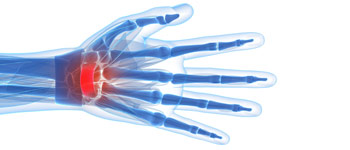Frequently Asked Questions
About Hand & Wrist Surgery
General FAQ
- What kind of surgeon specializes in hand surgery?
- What makes the Hand & Wrist Center Los Angeles different?
- What if I don’t know what condition I have?
Carpal Tunnel FAQ
- Are men and woman are at equal risk for developing carpal tunnel syndrome?
- How is carpal tunnel treated when a patient has the condition in both hands?
- What kind of anesthesia is used in carpal tunnel surgery?
- What is endoscopic carpal tunnel release surgery?
- What are the benefits of minimally invasive carpal tunnel release?
Trigger Finger FAQ
- How is trigger finger treated when a patient has the condition in both hands?
- Why are my trigger finger symptoms usually worse in when I first wake up?
General FAQ Answers
What kind of surgeon specializes in hand surgery?
A plastic surgeon or orthopedic surgeon (an surgeon who deals with conditions of the bones, muscles, ligaments and joints) can choose to do additional training in order to have a specialty hand surgery. At the Hand & Wrist Center Los Angeles our team of highly trained surgeons come from backgrounds of both plastic and orthopedic surgery and have extensive experience the treatment of hand injuries. Our medical director, Dr. Sean Younai, is a renowned specialist in reconstructive hand surgery.
What makes the Hand & Wrist Center Los Angeles unique?
At the Hand & Wrist Center Los Angeles, we are focused on the treatment of hand, finger and wrist related conditions. This focused approach allows us to provide specialized care of the highest possible quality and ensures excellent results for our patients. Additionally, as a private surgery center, we offer patients a comfortable alternative to the typically stressful hospital experience.
What if I don’t know what condition I have?
If you are experiencing discomfort or pain in the hand but do not yet have a diagnosis, simply schedule a consultation with one of our leading Los Angles hand specialists. One of our physicians will do a thorough examination and recommend a proper course of treatment of you condition.
Carpal Tunnel FAQ Answers
Are men and woman are at equal risk for developing carpal tunnel syndrome?
Clinical data shows that woman are actually as much as ten times more likely to develop carpal tunnel syndrome than men are. This is largely due to the fact that women tend to have smaller hands and thus a narrower carpal tunnel.
How is carpal tunnel treated when a patient has the condition in both hands?
If needed, it is possible to address both hands in one operation. Doing so does not generally have any effect upon recovery time but can increase the discomfort and pain experienced after surgery. The choice to treat both hands separately or at once is left to each individual patient’s discretion.
What kind of anesthesia is used in carpal tunnel surgery?
Carpal tunnel release surgery can be performed under local anesthesia. This makes it a fairly simple, outpatient operation. This means that patients can return home on the day of surgery without requiring overnight care.
What is endoscopic carpal tunnel release surgery?
Endoscopic surgery is a minimally invasive approach performed using an advanced surgical tool called an endoscope. The endoscope is composed of a thin tube with a miniature light and camera on the end. In endoscopic carpal tunnel release the endoscope is inserted through a small incision in the palm. The area to be operated upon is then magnified and projected on a screen. The surgeon uses the images on the screen to guide the surgery, which is performed using small instrument inserted through another small incision.
What are the benefits of minimally invasive carpal tunnel release?
Minimally invasive or endoscopic surgery for treatment of carpal tunnel syndrome can dramatically increase risk for complication. It can also make for a faster recovery, less pain and less scarring. One must of course bear in mind are risks involved in any form of surgery. Your surgeon can and will inform of you these before your surgery.
Trigger Finger FAQ Answers
How is trigger finger treated when a patient has the condition in both hands?
Trigger finger release surgery can be performed on multiple affected fingers at once. At worst doing so may cause an increase in pain and tenderness felt after surgery. The choice to treat each effected finger separately or at once is left to each individual patient’s discretion.
Why are my trigger finger symptoms usually worse in when I first wake up?
It is common to allow the fingers to curl into palm while sleeping. This can cause the afflicted tendon sheath to become increasingly irritated, locking the finger into the flexed or bent position. It is recommended wear a splint while sleeping in order avoid this.


